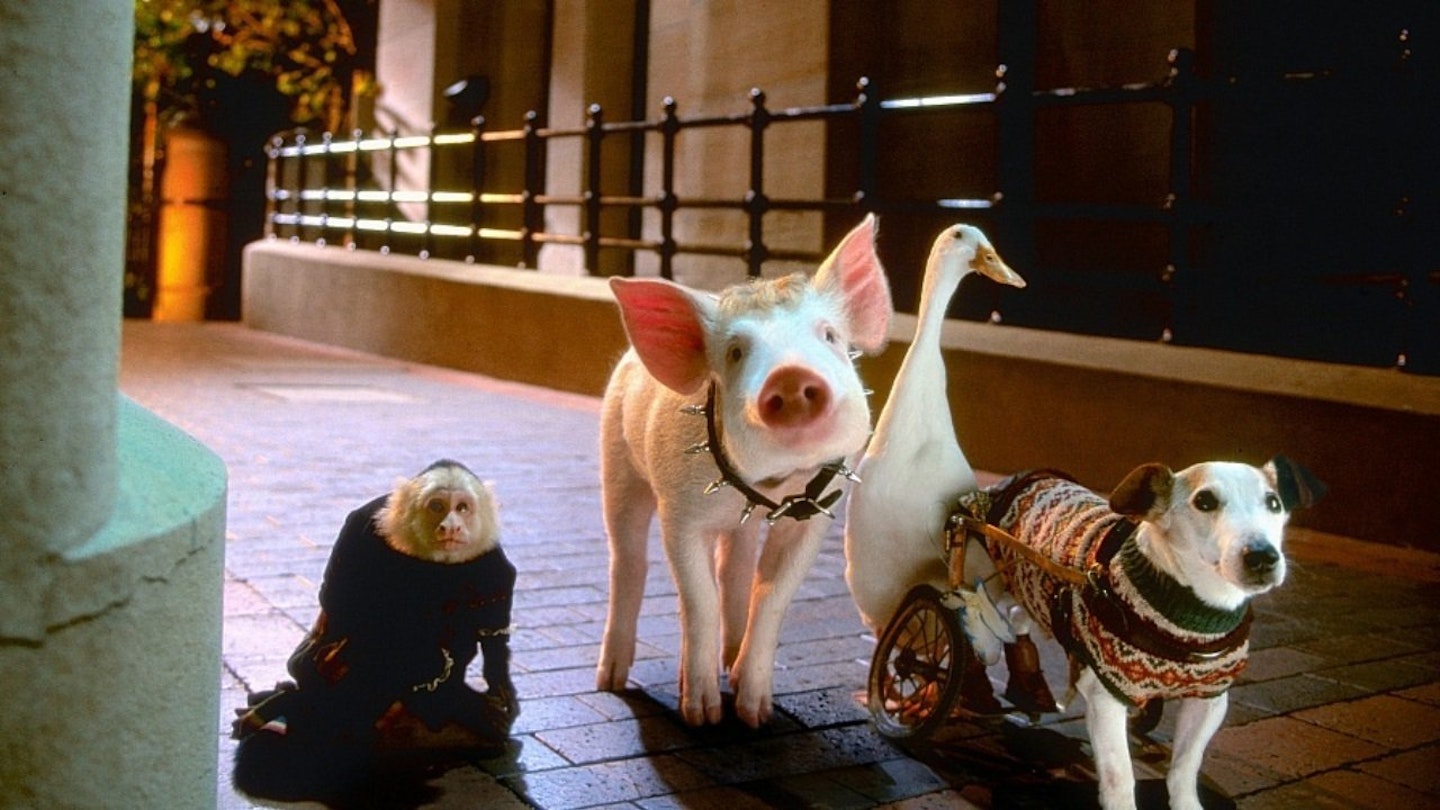Avengers-style suspicions were aroused when a print was not available until three days before it opened. Whispers filtered back about small children fleeing test screenings in tears. Had they turned a rich silk purse into a twitching sow's ear?
Sad to say, yes. The very people who made our Christmas in 1995 have pissed on the mince pies. Babe: Pig In The City is wrong, wrong, wrong. In the original, a piglet escapes a "cruel and sunless world" and brings cheery, cross-species innocence to a storybook farm. Here, circumstance takes him to a world even crueller: the composite urban sprawl of Metropolis. When Farmer Hoggett (Cromwell) has a nasty accident and Mrs. Hoggett (Szubanski) is arrested, Babe (voiced by E.G. Daily) gets entangled in the local animal netherworld. It's a logical enough narrative extension - environmental change exerts further tests on Babe's innocent nature, providing plenty of opportunity for anthropomorphic fun (guard dogs voiced as Italian-American wise guys, a poodle as a hooker). Even the singing mice are back. So why isn't this an engaging second chapter in the life of cinema's best-loved pig?
Because director Miller (writer of Babe but of Mad Max heritage) lets the dark side run away with him. Rightly observing that fairy tales are quite nasty, he wrongly throws all manner of unsavoury baggage at our rural innocents abroad - an airport strip-search, street punks, guns, drugs, and an even scarier variant on Lady And The Tramp's dog-catchers - and the effect, combined with production design that out-glooms Orson Welles, is one of incessant defilement of the original, the audience, and the creatures forced to perform in this overpopulated circus.
God knows what dreams it will give the kiddies: the twitching leg of a dying Jack Russell, Babe with his head on a platter. It's hard to spot the animatronic join. And it's not all technical perfection either: a scene where Ferdinand the duck flies with pelicans is as convincing as Harry Hill's badgers.

